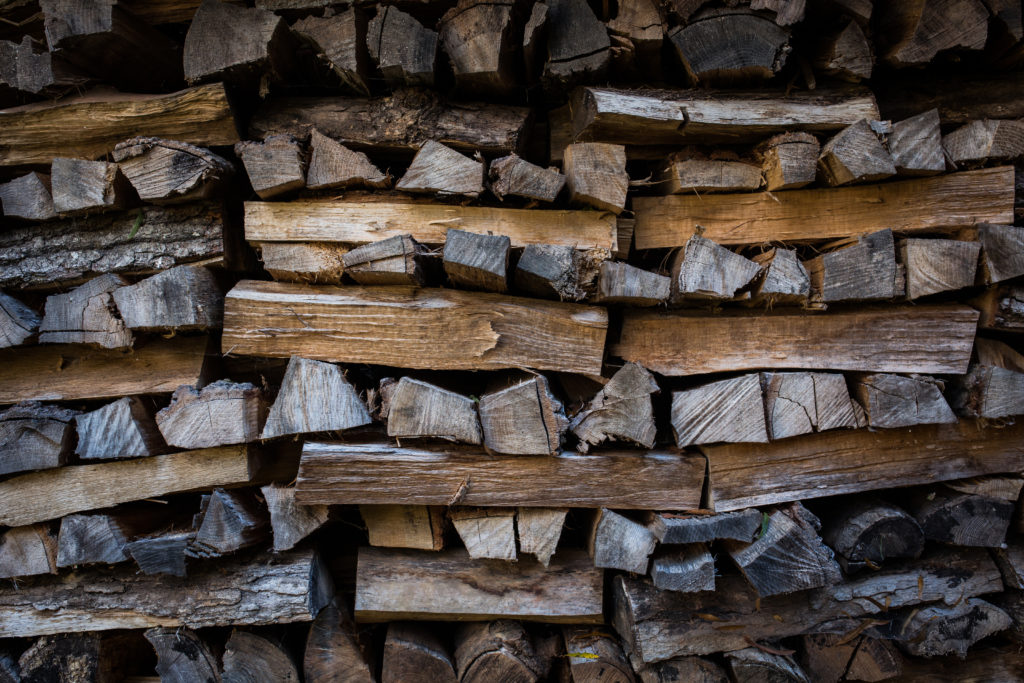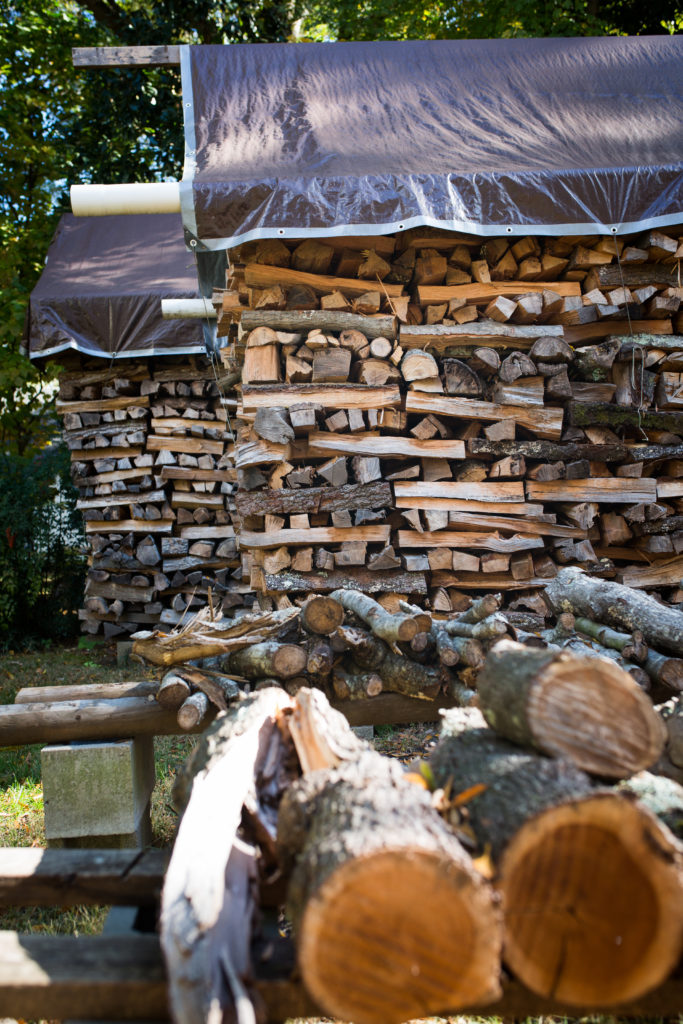In his neighborhood, this retired NC State professor is known for his dedication to gathering and splitting wood to heat his home.
by Ayn-Monique Klahre | photography by Joe Pellegrino
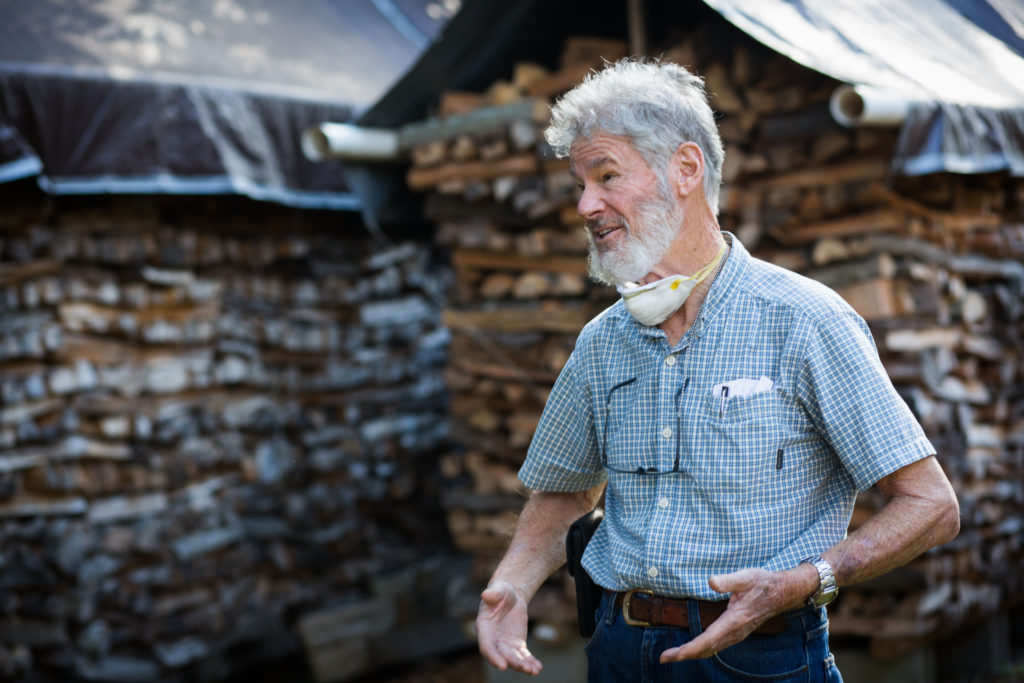
Tom Wolcott has led an interesting life. He and his wife, Donna, are both retired professors of marine sciences. They’ve studied sea urchins, ghost crabs, and the mating habits of blue crabs. Their research has taken them from California to the Carolina coast to the Chesapeake Bay, from Bermuda to Panama to the Virgin Islands — once spending months on a boat with their dog and two young children, a box of Legos, and weekly trips to the library to keep the kids occupied.
But here, in landlocked Raleigh, and particularly in their University Park neighborhood, they’re better known for a different kind of scientific practice: the careful and conscious heating of their home through an old-fashioned fuel, firewood.
In 1973, Tom and Donna bought their “starter home” on Henderson Street. Modest though it was — a brick one-story, with Tudor flourishes along the facade — it was an easy walk to North Carolina State University campus, where both worked as professors. “It was all we could afford at the time, and not in too splendid of a condition, but not having to commute was quite a blessing!” says Tom. The home, built in the 1940s, was heated by a coal furnace in the basement which had been “clumsily” converted to oil. “It was horrendously inefficient,” says Wolcott.
A tinkerer by nature, he soon found himself in the crawlspace looking for a solution, where he discovered the old coal grates. They sparked an idea: retrofit the furnace a second time, but this time to burn wood. It worked.
“I burned wood in that for a decade before it rusted out,” he says. He replaced the rigged-up furnace with a new one from a Minnesota company, Yukon-Eagle, that makes solid-fuel furnaces, and has been using that ever since to heat his home. “It has a stainless steel box, crossflow heat exchange, and a backup burner,” he says. Tech-forward and efficient, but still reliant on old-school fuel.
“I’d see some smoke coming out of the chimney starting in September, but I didn’t pay attention for many years,” says neighbor George Allen. This spring, Allen had a large tree removed from his property. He notified neighbors about the tree service coming, and on the designated day, Wolcott arrived, too. “He was on the scene with his lumberjack plaid on,” says Allen. Their conversation turned into a tour of the Wolcotts’ property, where, tucked into a corner of the broad lawn, Allen encountered Tom’s wood piles for the first time. “They’re immaculate — they look like log cabins,” says Allen.
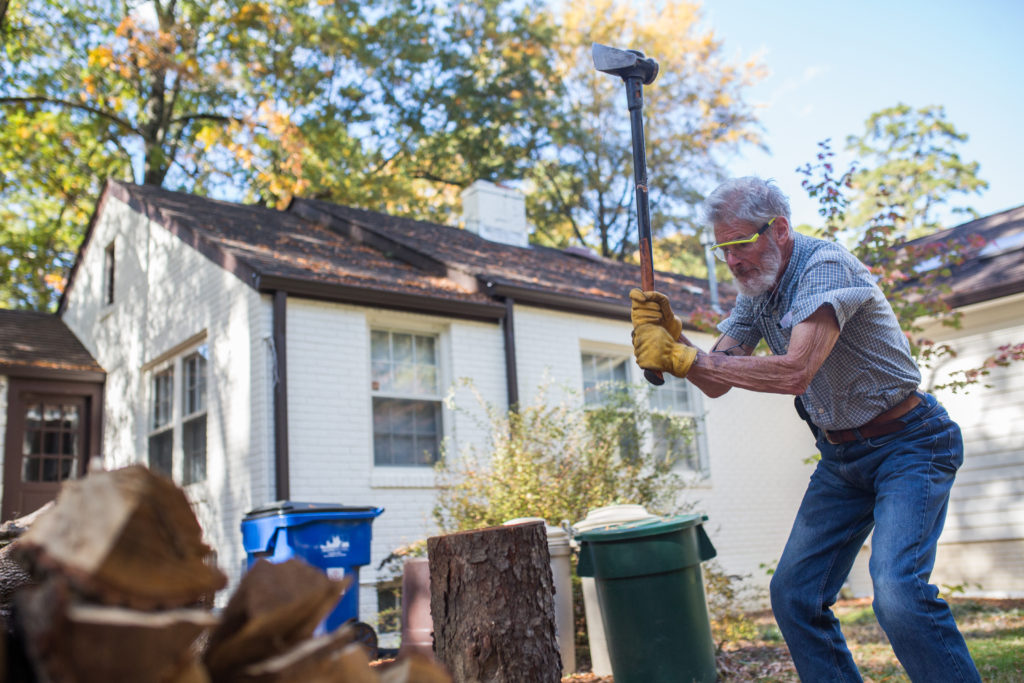
Built upon cement risers are rows upon rows of neatly stacked firewood, arranged in crosswise trios, rising more than 7 feet high. Above the piles are peaked plastic tarp roofs made with plumbing pipes, to keep the firewood dry. Tom lets the wood cure for a year or more, then he and Donna start the painstaking process of moving all the firewood from the pile down to to the basement, tossing it through through the old coal chute.
Tom and Donna use all hardwood, usually oak, which burns clean. They’ve gotten some red oak tree trunks up to 4 feet in diameter. Then Tom splits all his wood — in an afternoon, he can fill about half a level on one of his pallets — in an effort that continues year-round. “He chops wood every day,” says friend and neighbor Yvonne Wyche. “If it’s cold, he’s out there in his plaid shirt, if it’s hot, he’s in shorts.”
“Well, as an academic, I don’t really get enough physical exercise, and I don’t have sufficient self discipline to exercise for the sake of exercise,” Tom says. “But with this, I get to see the physical results of my labor — and hit things, too!” Some woods, like sycamore, are harder to split. “The green is all intertwined,” says Donna. Tom’s got a well-worn splitting maul (an axe doesn’t have the heft for this work), and he’ll often use a wedge made of dogwood to split the wood. “It lasts a surprisingly long time, it’s no wonder people have used it for fence posts for so long,” says Donna. It’s labor, but there’s finesse, she says: “Sometimes you have to think like a piece of wood to figure out where to split it.” If he comes across a piece of wood with a particularly fine grain, he saves it for a project for himself or a friend — a pair of cedar stools in the living room are a testament to his skills.
They gather wood every time there’s a storm: “High winds, hurricanes, an ice storm — he’s ready,” says Donna. “Whenever a tree falls across a driveway or a yard, Tom is right there,” confirms Allen. “I joke with my kids that Tom starts drooling when he hears a chainsaw start up.” The Wolcotts can’t collect wood from city property, but they can often convince tree companies to unload wood from a removal project into their driveway. “That’s my modus operandi,” says Tom, “I tell them, this is much closer than the dump!”
They use every part of the wood: they’ve found that bark makes good charcoal, and any ash left over from a fire is sorted, the larger coals used as a starter for a grill or smoker (the Wolcotts have so much they give it away to neighbors and friends), the ash to scatter over Raleigh’s notoriously acidic soil. On a very cold day, Tom will reload the fire four or five times. (“Sometimes it gets a little too hot,” he says, “this furnace was built for Minnesota winters.”) And a few years ago, he figured out that he could use the gas backup to his advantage. “I used to get up in the wee hours to light the fire to get the house warmed up in the morning,” Tom says. “But one day I realized, the gas backup can light the fire.” Now he loads in the firewood at night and sets the thermostat so the gas turns on around 5:30 a.m. on chilly nights. After about 15 minutes, the flame from the gas line lights the firewood. “We wake up to a nice warm house,” he says.
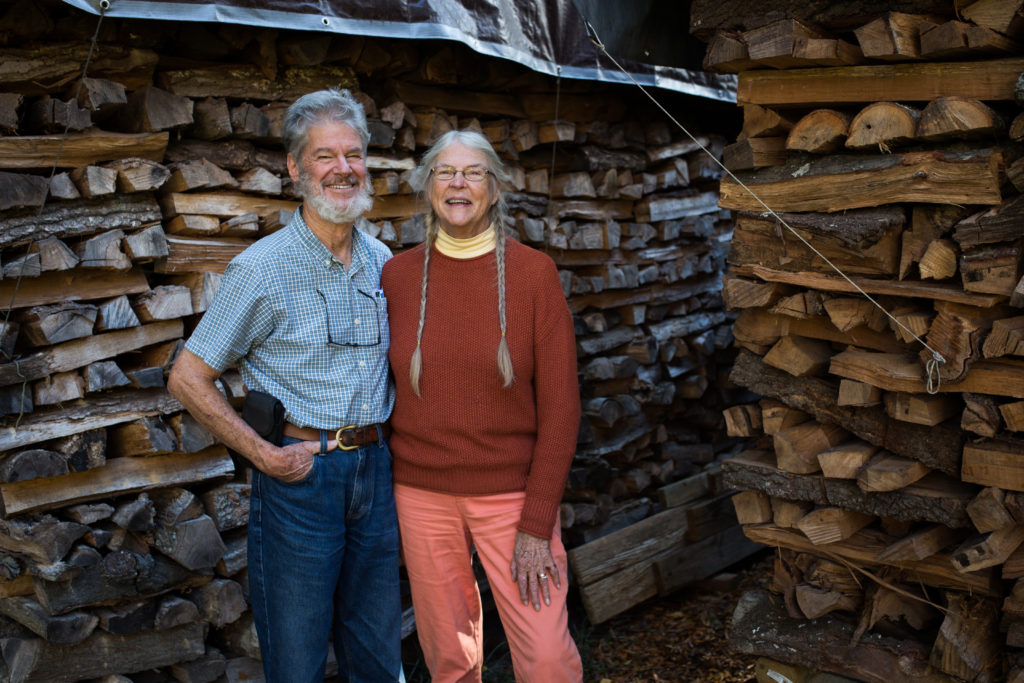
Now about 10 years into retirement, Tom and Donna (who he jokes is his “first” wife: “We’re 53 years into our trial marriage,” he laughs) are settled into their rhythm, in their cozy home that smells just slightly of woodsmoke. They haven’t left the ocean behind, either — they maintain a boat in Elizabeth City, another labor of love that requires frequent tinkering and rehabbing. But day to day here in Raleigh, it’s the rhythm of stoking the fire, splitting and stacking the wood, and keeping up the simple, sustainable life they’ve built. “We’re staying in our starter home,” Tom says, “and seeing how long we can keep sailing.”
__
This article originally appeared in the December, 2021 issue of WALTER Magazine

